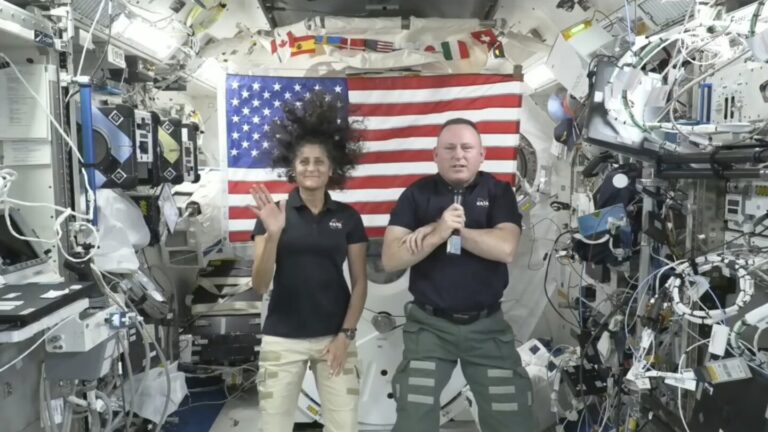CAPE CANAVERAL, Fla. (AP) — The two astronauts who were supposed to return to Earth weeks ago said Wednesday they were confident their Boeing space capsule would make it home safely, despite a series of nasty malfunctions.
NASA test pilots Butch Wilmore and Suni Williams Release Earlier this month, the first passengers boarded Boeing’s new Starliner spacecraft, which was shut down due to a helium leak and a failed thruster. arrival It has been aboard the International Space Station for much longer than expected, and officials now say the earliest it can return home is the end of July.
At their first press conference from orbit, the two said they plan to return after thruster tests on Earth are complete. They said they are not frustrated by the extended time in orbit and are enjoying helping the space station crew. Both have previously worked in the orbital laboratory, which is home to seven other astronauts.
“I have a really good feeling that the spacecraft is going to get us back home safely,” Williams told reporters.
The test flights were scheduled to continue for eight days, until June 14th.
Steve Stich, NASA’s commercial crew program manager, said the earliest Starliner astronauts could return would be the end of July. The goal is to have them back before SpaceX sends a new crew in mid-August, but Stich noted that could change.
This week, NASA and Boeing are trying to replicate the Starliner thruster problem on a brand new unit at White Sands Missile Range in New Mexico, one of the main landing sites in the western desert of the U.S. The problem lies in the propulsion system used to steer the spacecraft.
Five thrusters failed as the capsule approached the space station on June 6, the day after launch. Four have since been restarted. Wilmore said there should be enough thrusters still working to get him and Williams out of orbit, and that larger engines could be substituted if necessary.
“As you’ve heard, failure is not an option, and that’s why we’re here right now,” Wilmore said. “We believe the testing we’re doing is the testing we need to get the right answers and the data we need to get back.”
Boeing and NASA believe ground testing is essential to determine what went wrong because that part of the capsule, the service module, will be discarded before landing, and it’s in that discarded part that the leak occurred.
So far, tests have not been able to replicate the high temperatures reached during flight, Stich said. Managers want to make sure the suspect thruster is not damaged before sending Starliner back. The thruster may have failed because it was fired more frequently than expected early in the flight, putting it under extra strain, Stich said.
At the same time, ground tests are being conducted to better understand the cause of the helium leak, which appears to have been caused by a faulty seal. Officials have previously said there is enough helium left for the spacecraft to return home.
Hurricane Beryl has slowed some of the work, and the Johnson Space Center in Houston, home to NASA and Boeing mission control centers, was closed to all but essential staff earlier this week.
Boeing’s Mark Nappi stressed that if an emergency were to occur, the Starliner and its crew would be able to return home right now, saying the company doesn’t believe the thrusters are damaged but “we want to do this test to fill in the blanks and make sure that’s the case.”
NASA paid billions of dollars to order Starliner and SpaceX’s Dragon capsules a decade ago to ferry astronauts to the space station. SpaceX’s first flight with astronauts on board was scheduled for 2020. Boeing’s first crewed flight was repeatedly delayed by software and other issues.
Stich said there have been no discussions with SpaceX about launching a rescue capsule.
___
The Associated Press Health and Science Department receives support from the Howard Hughes Medical Institute’s Science Education Media Group. The AP is solely responsible for all content.


